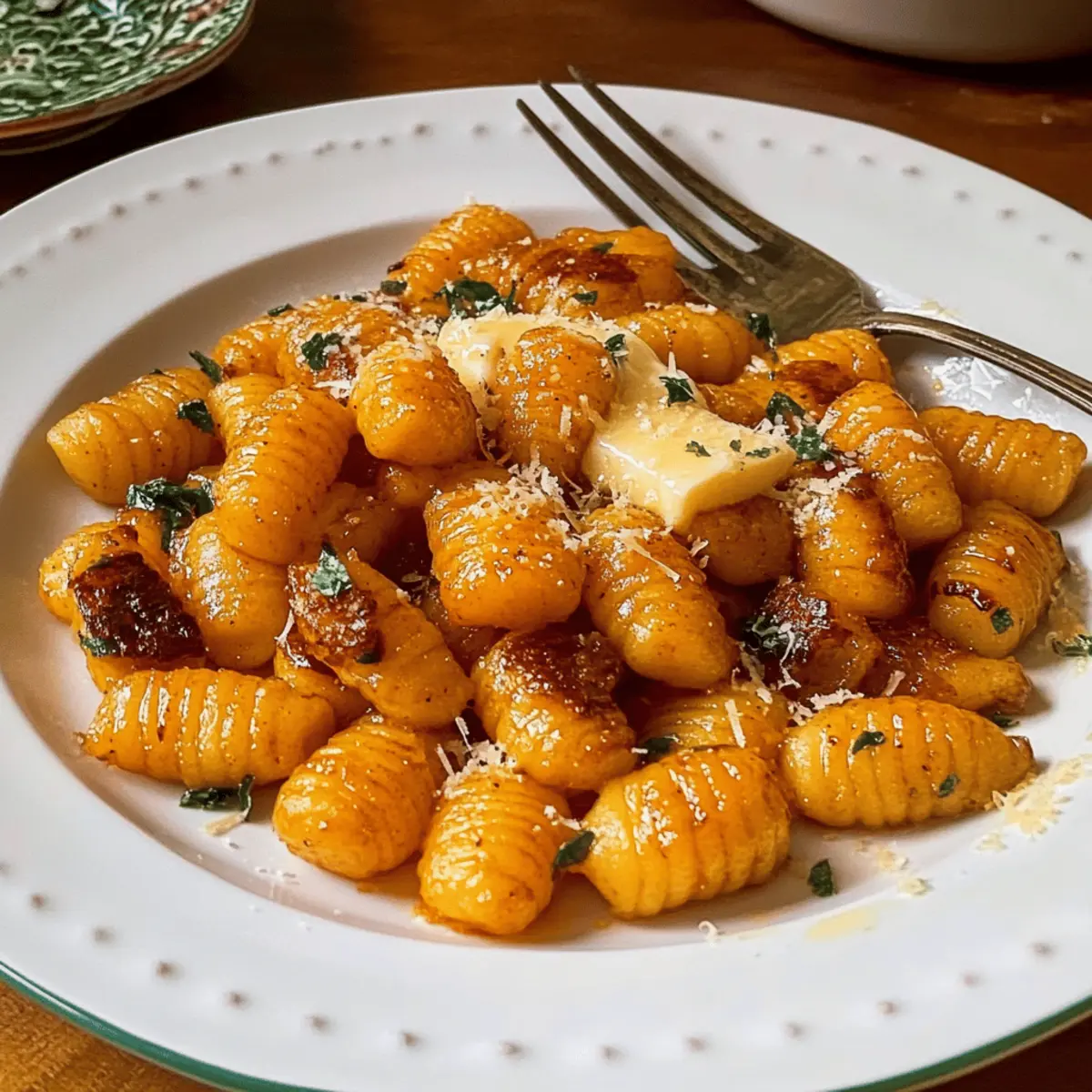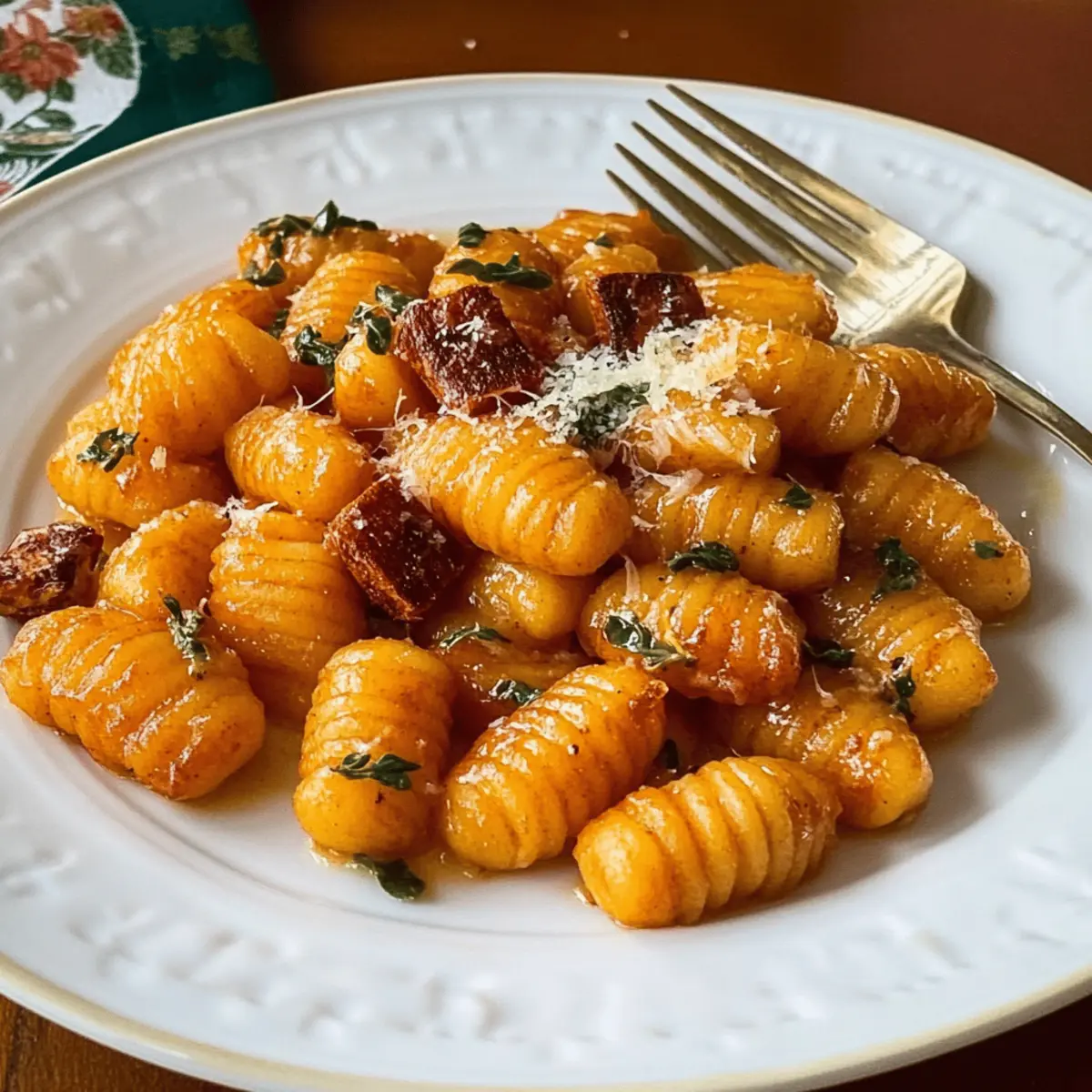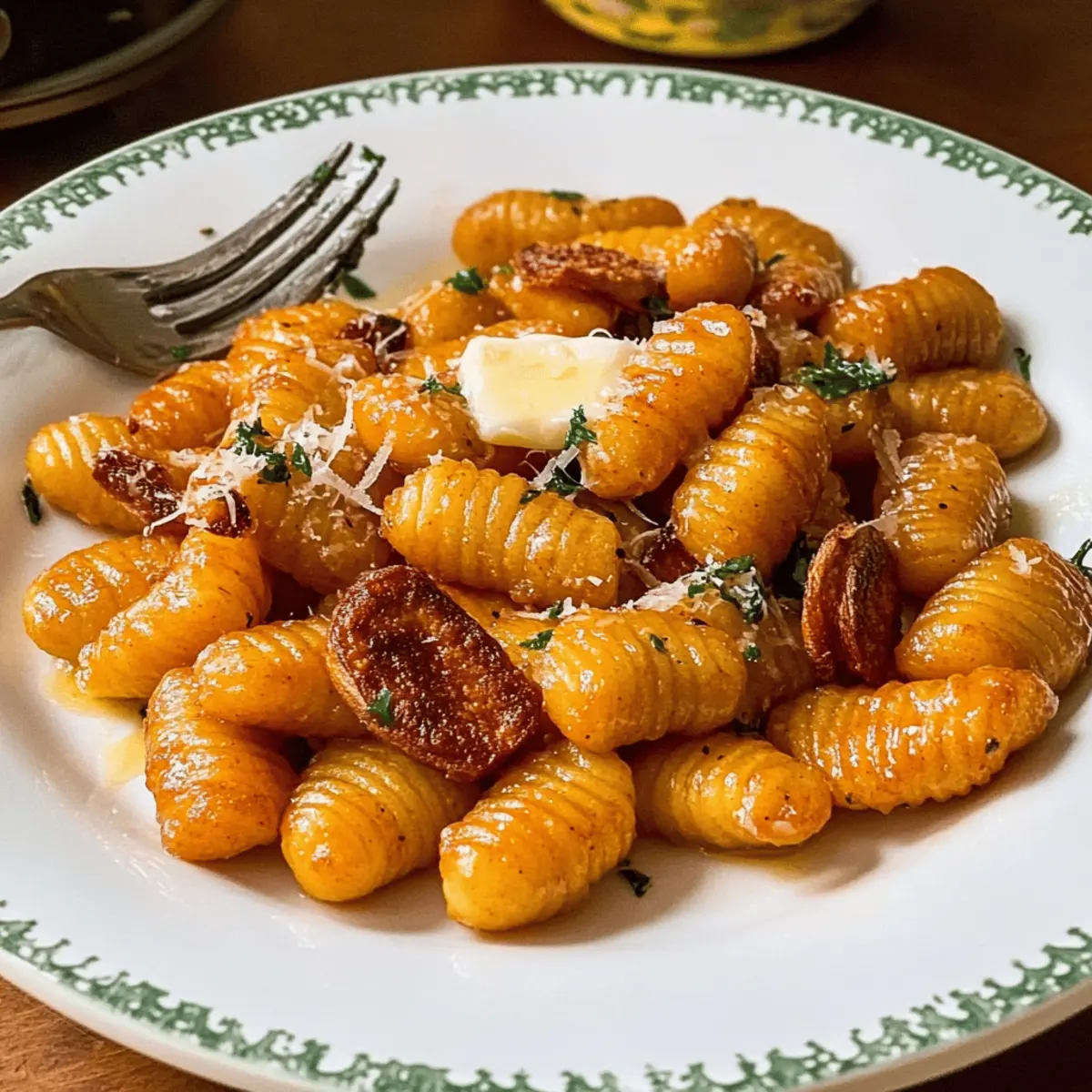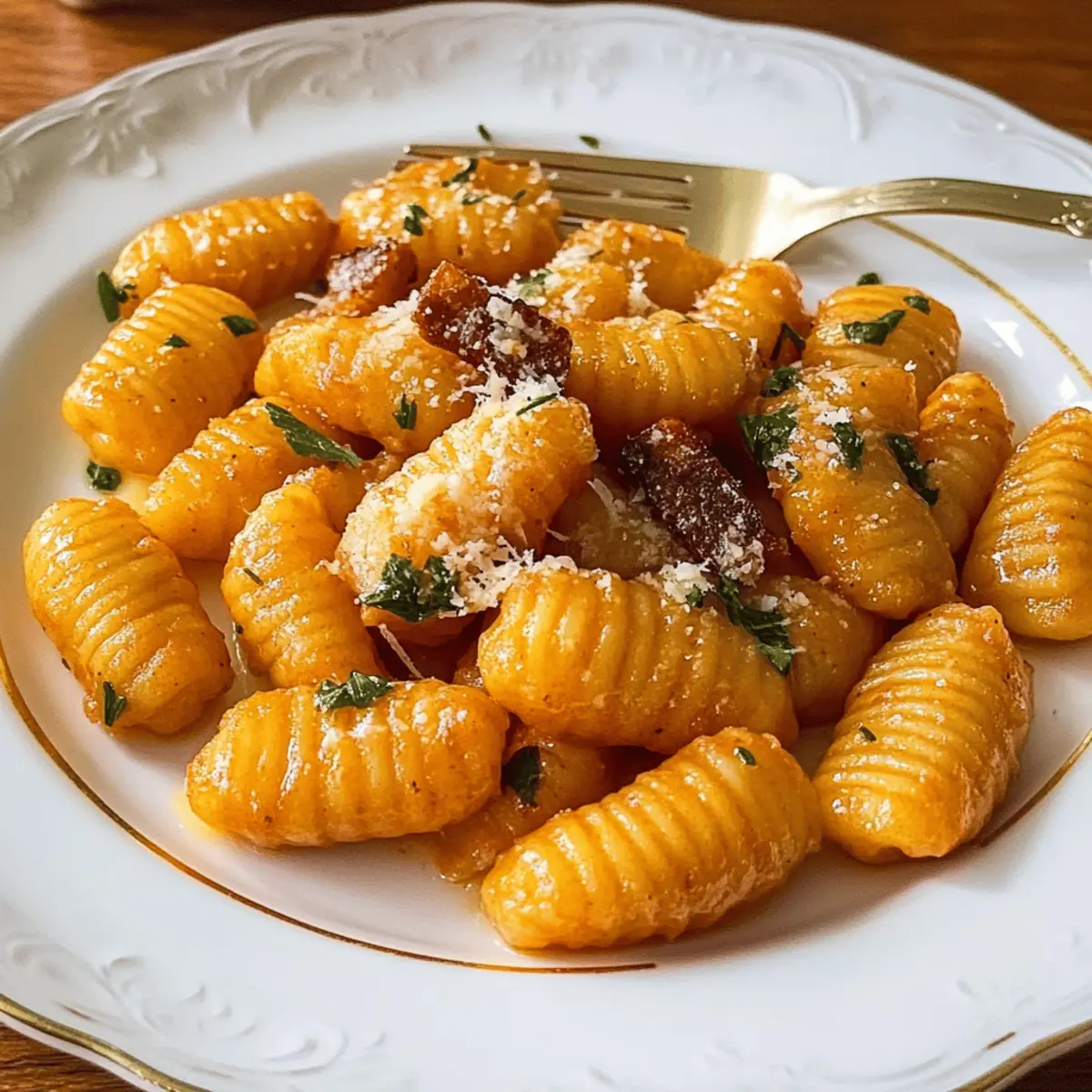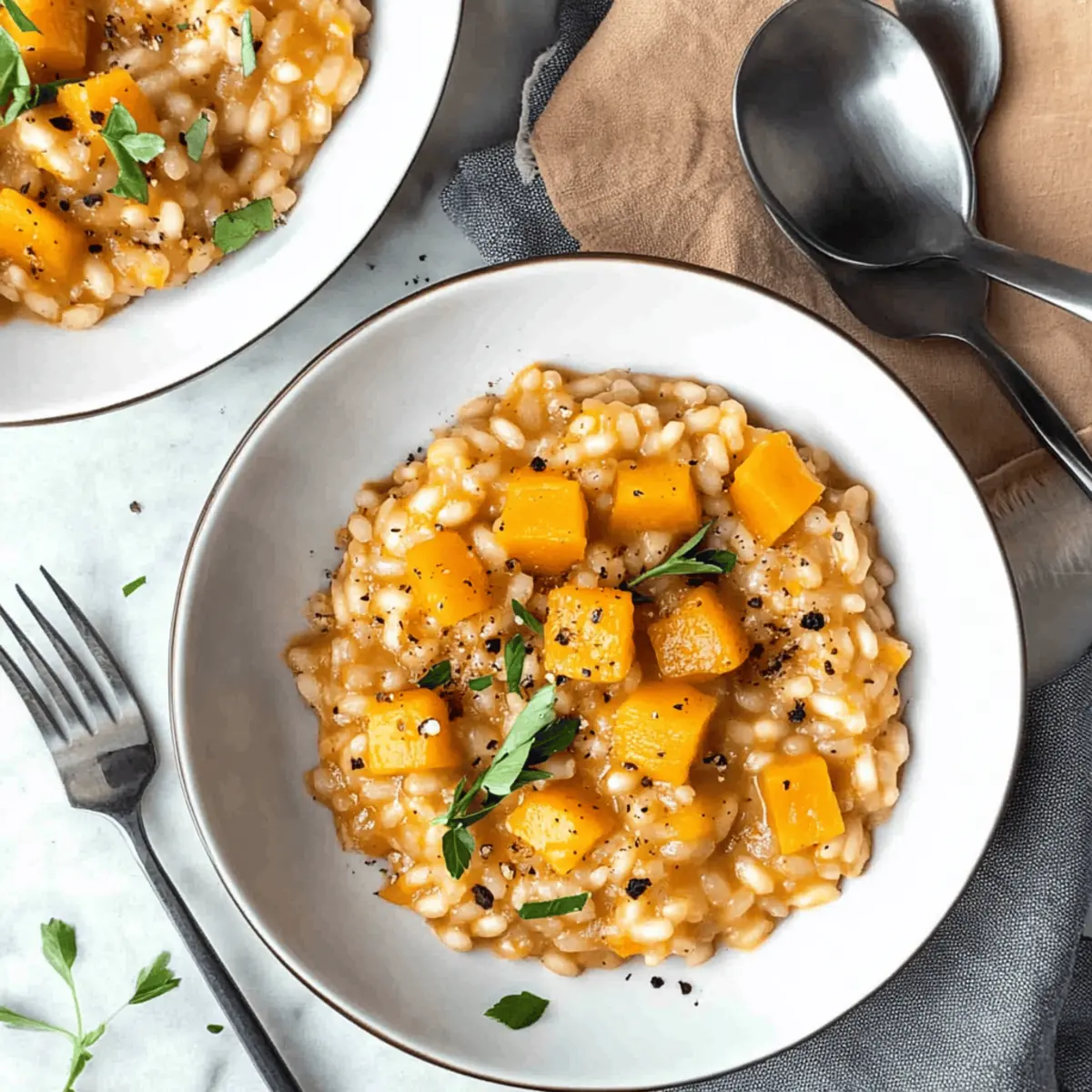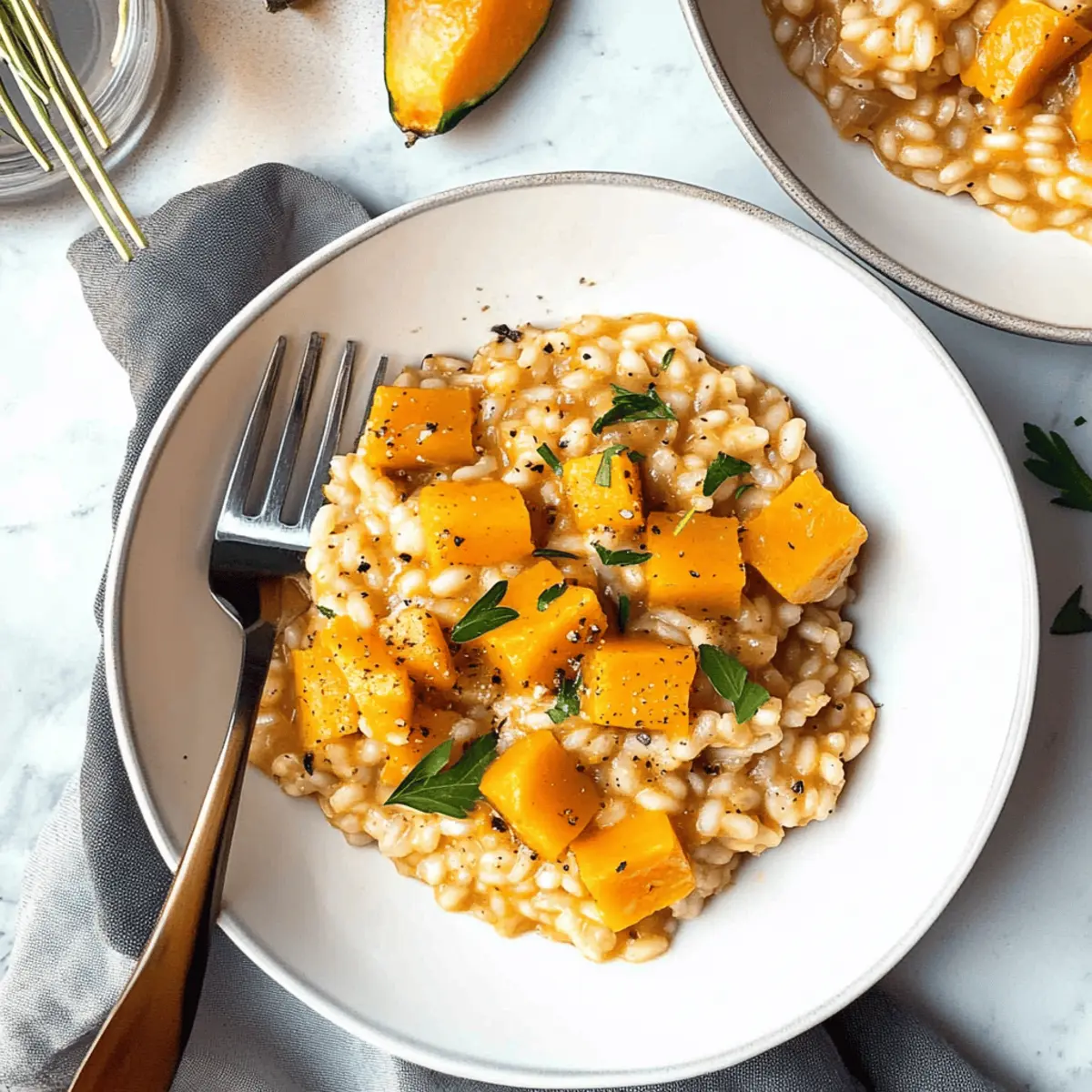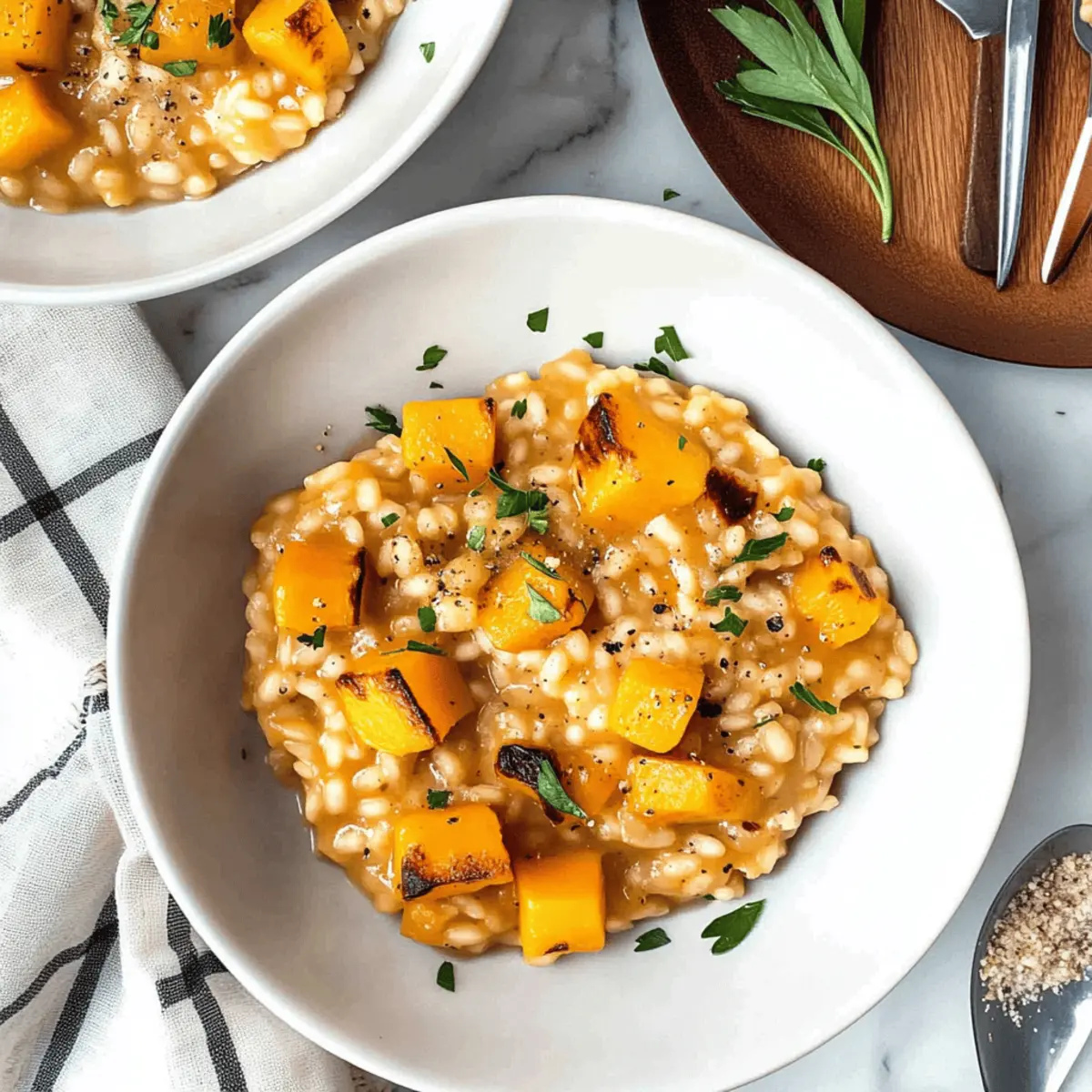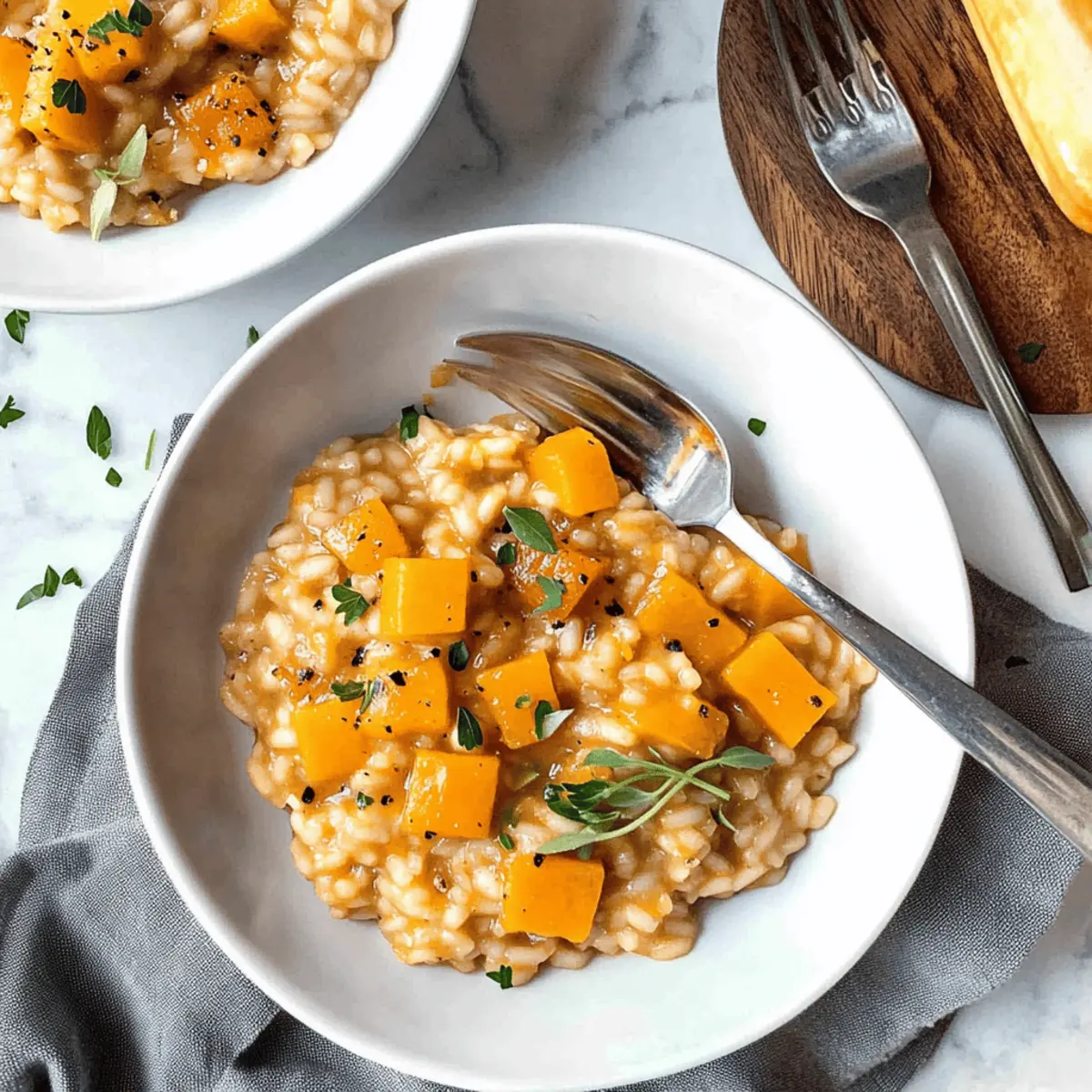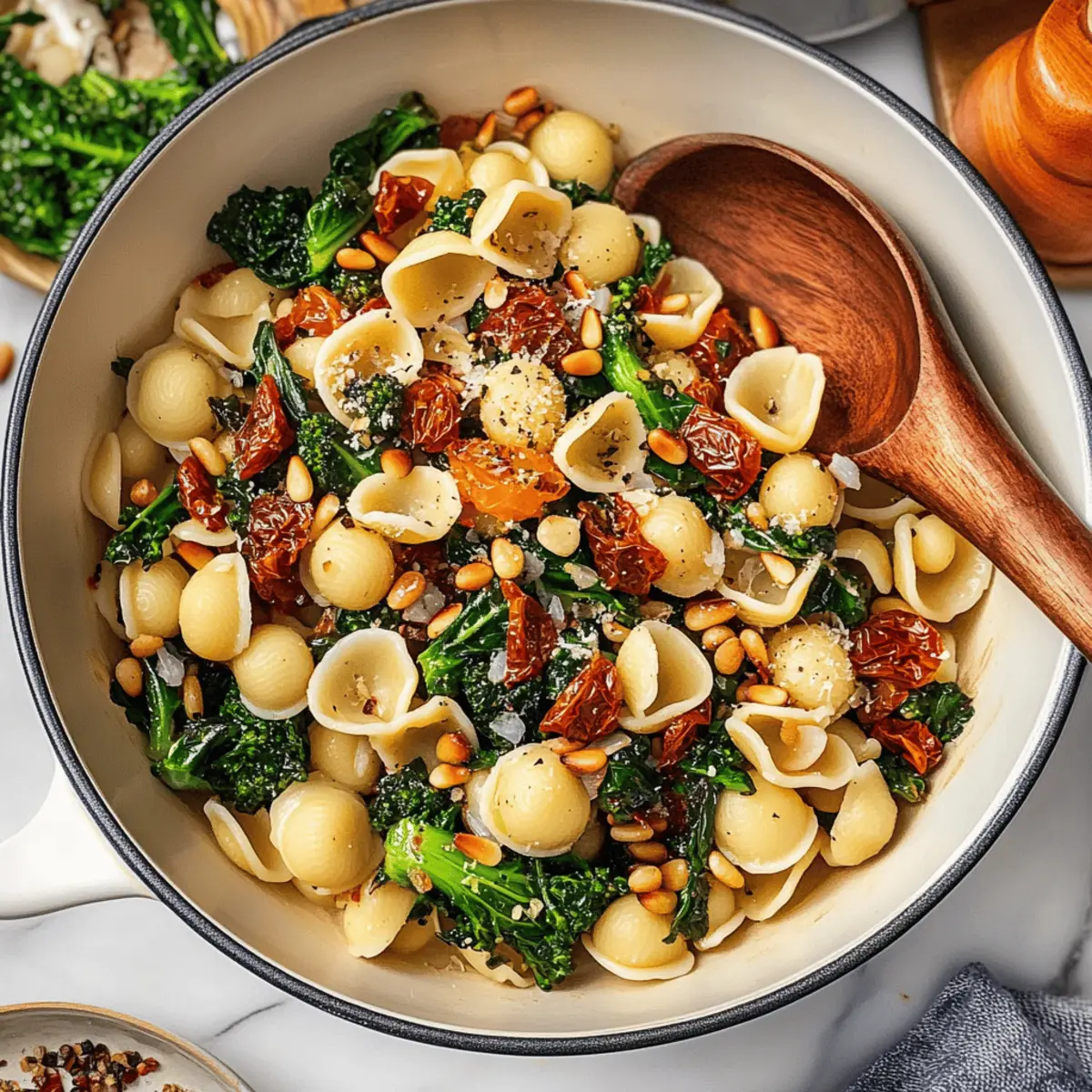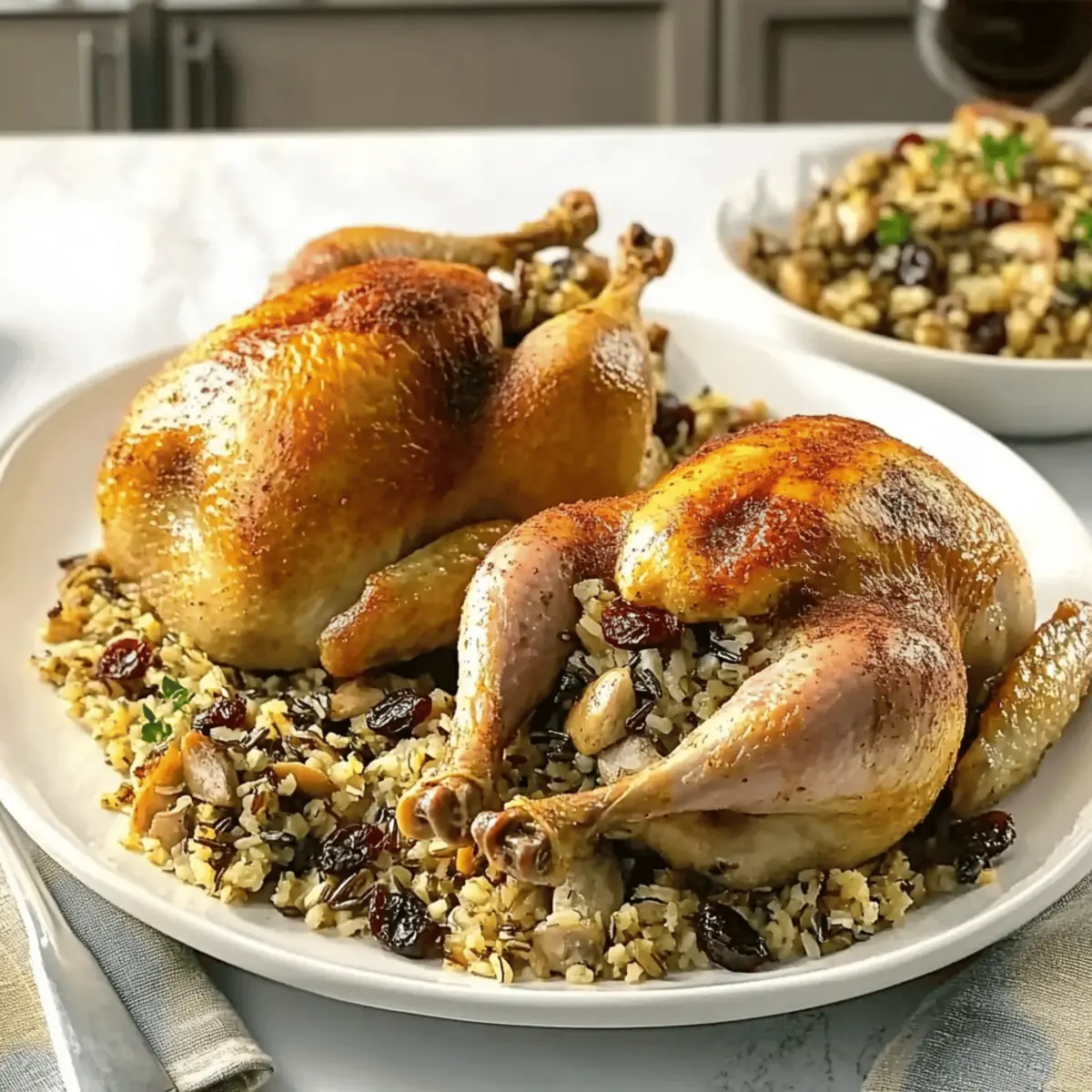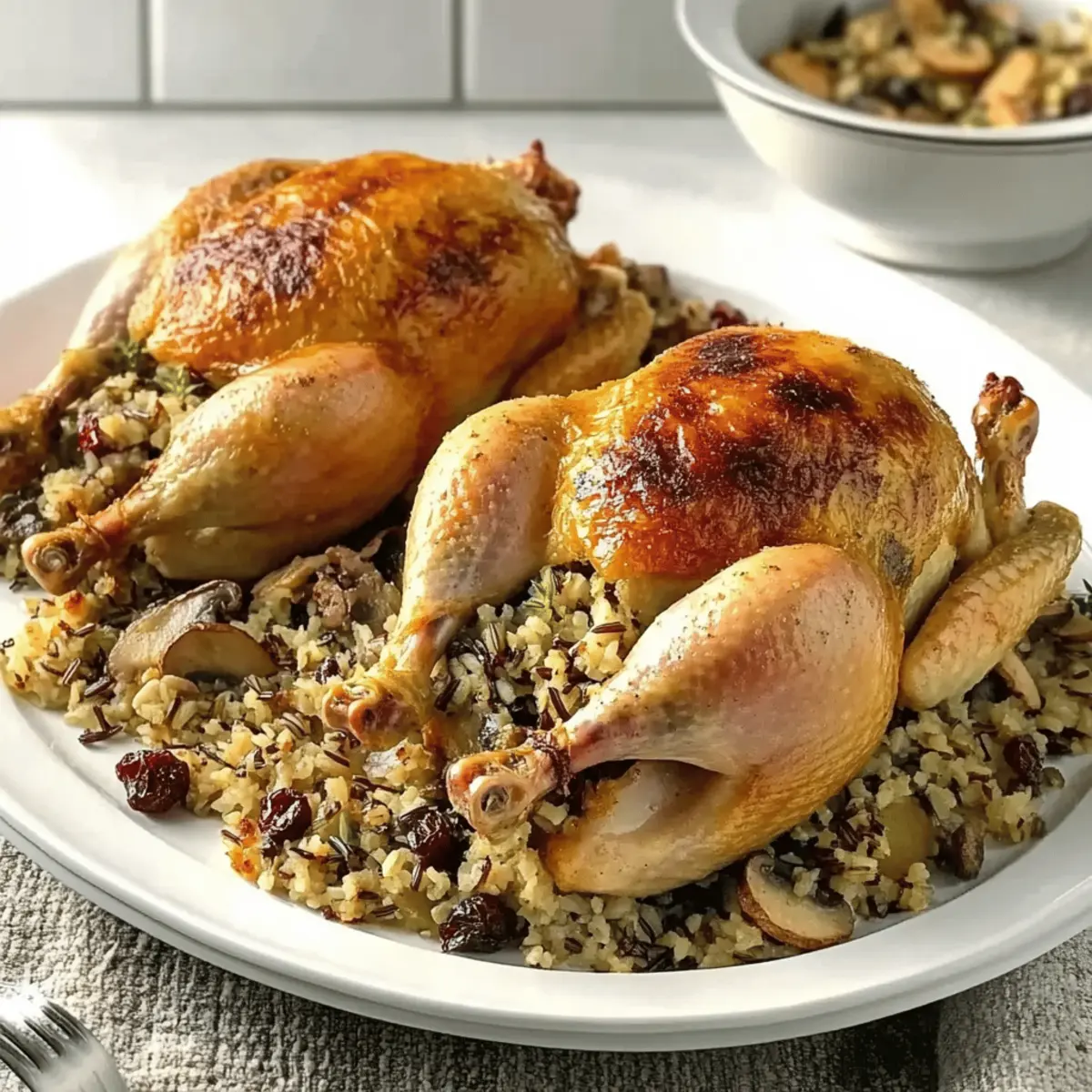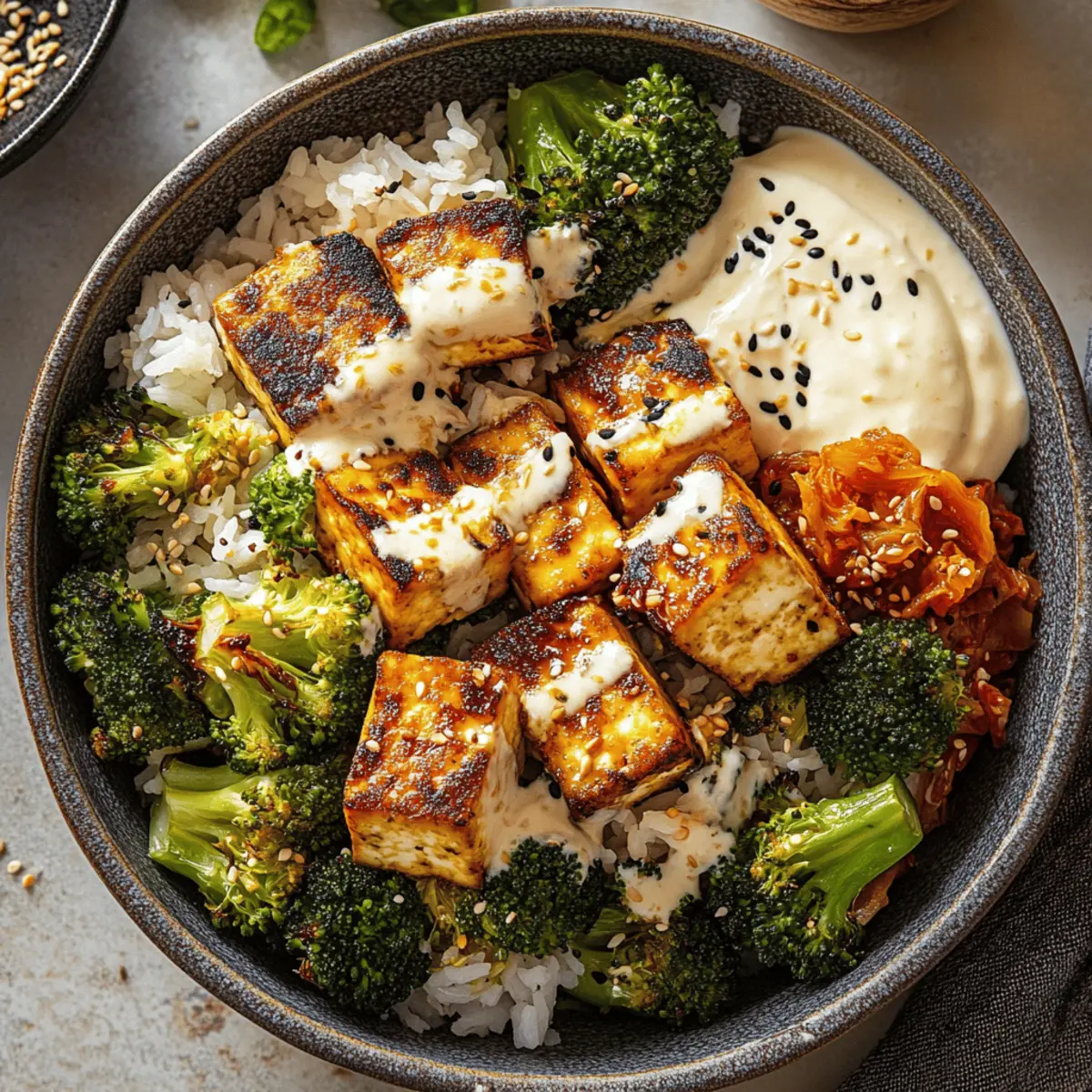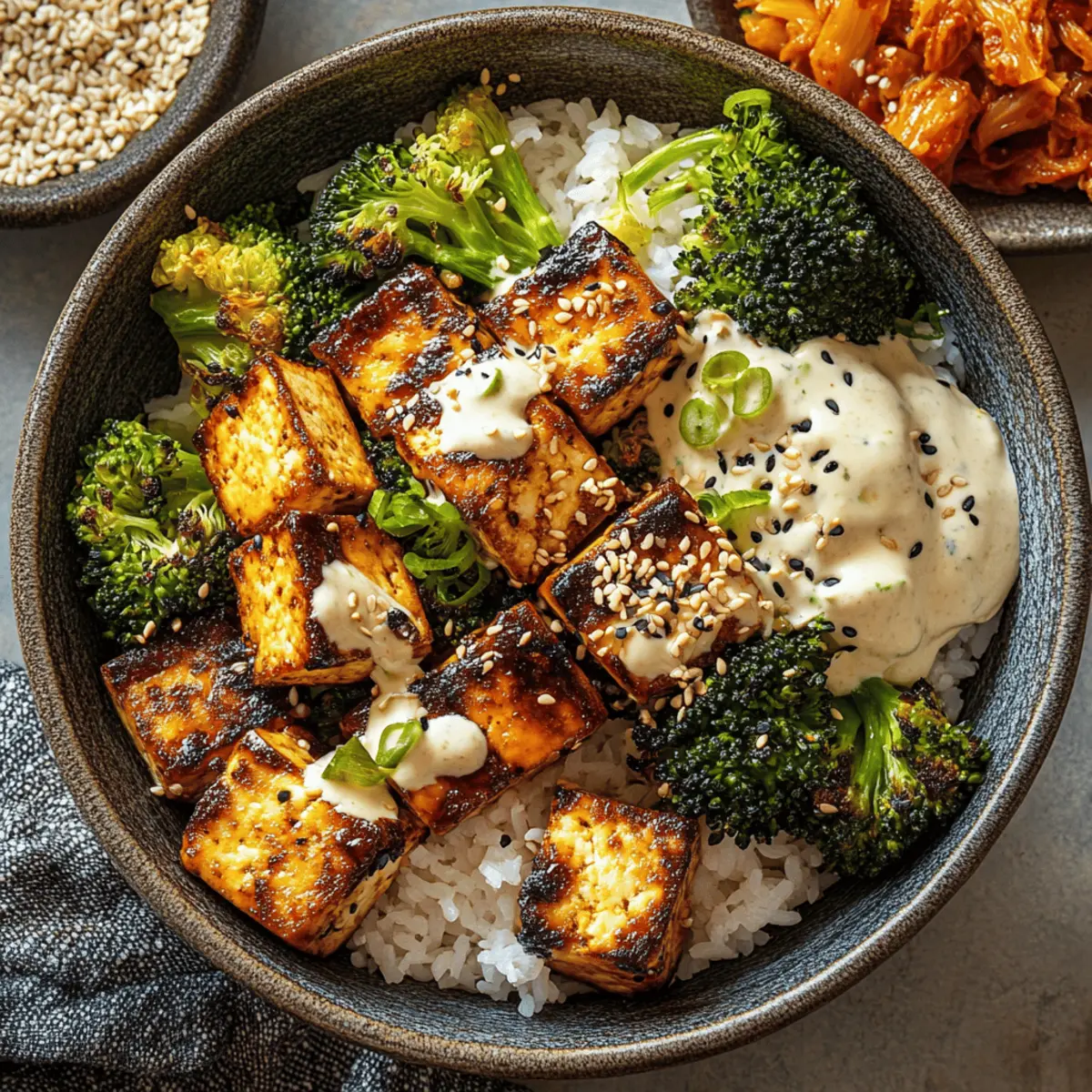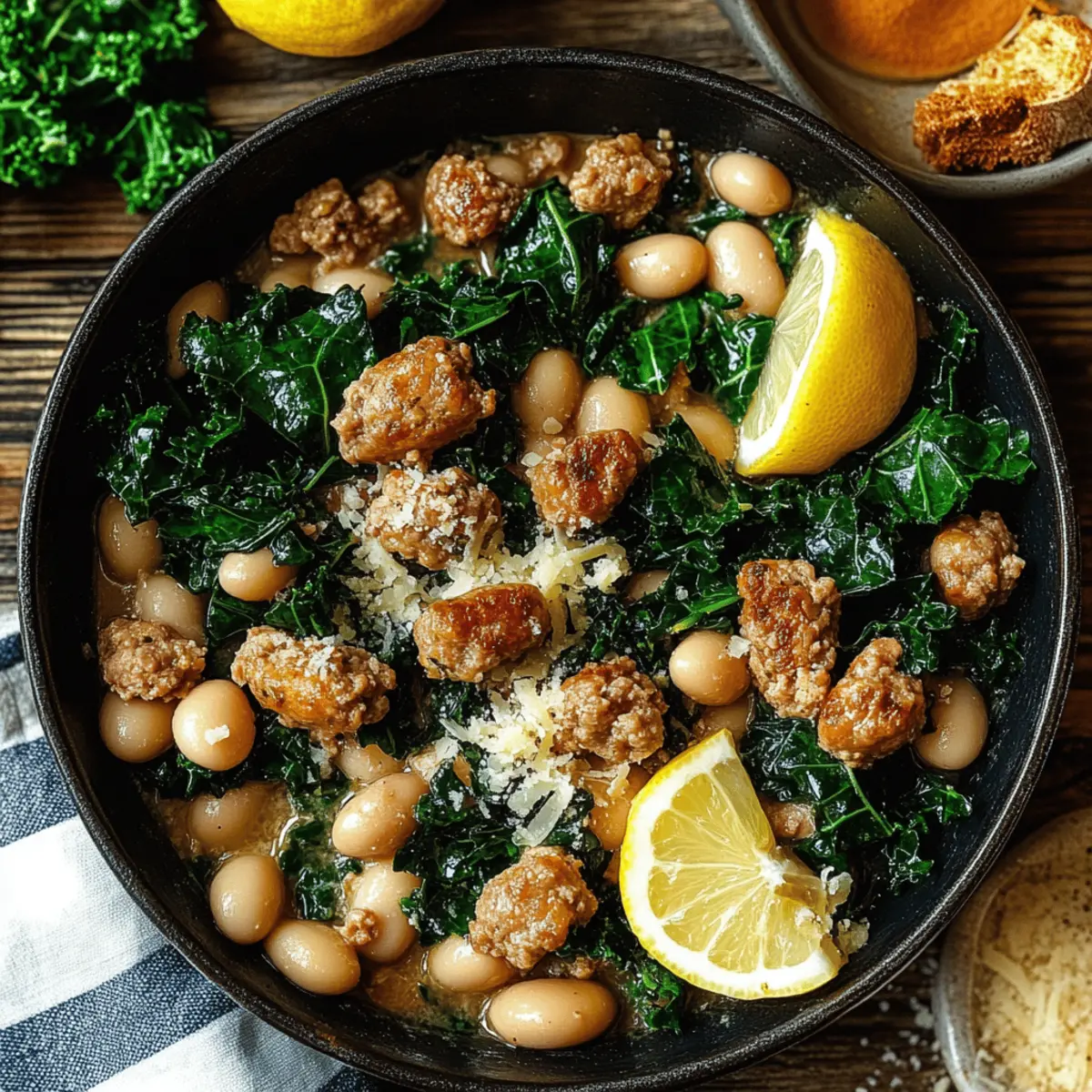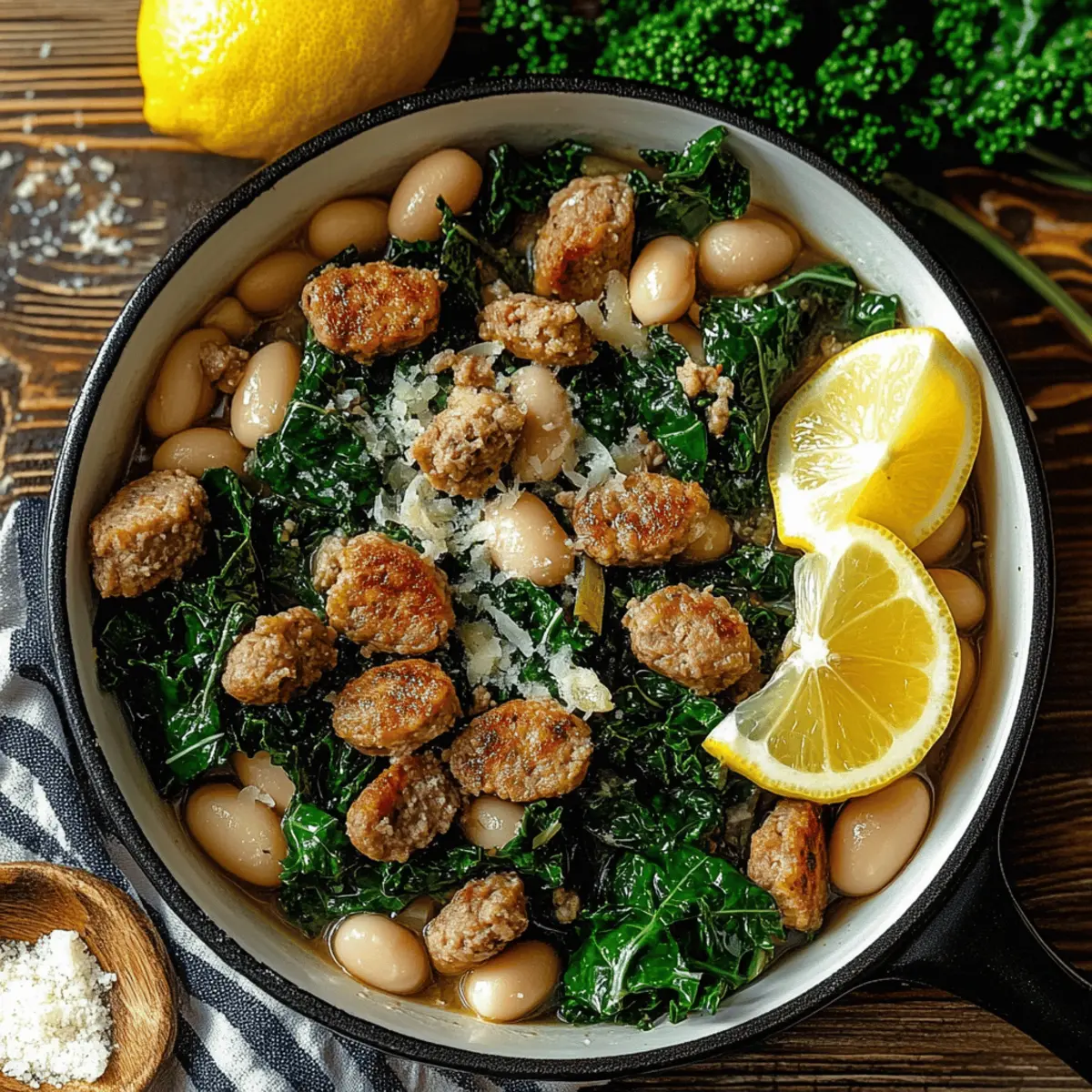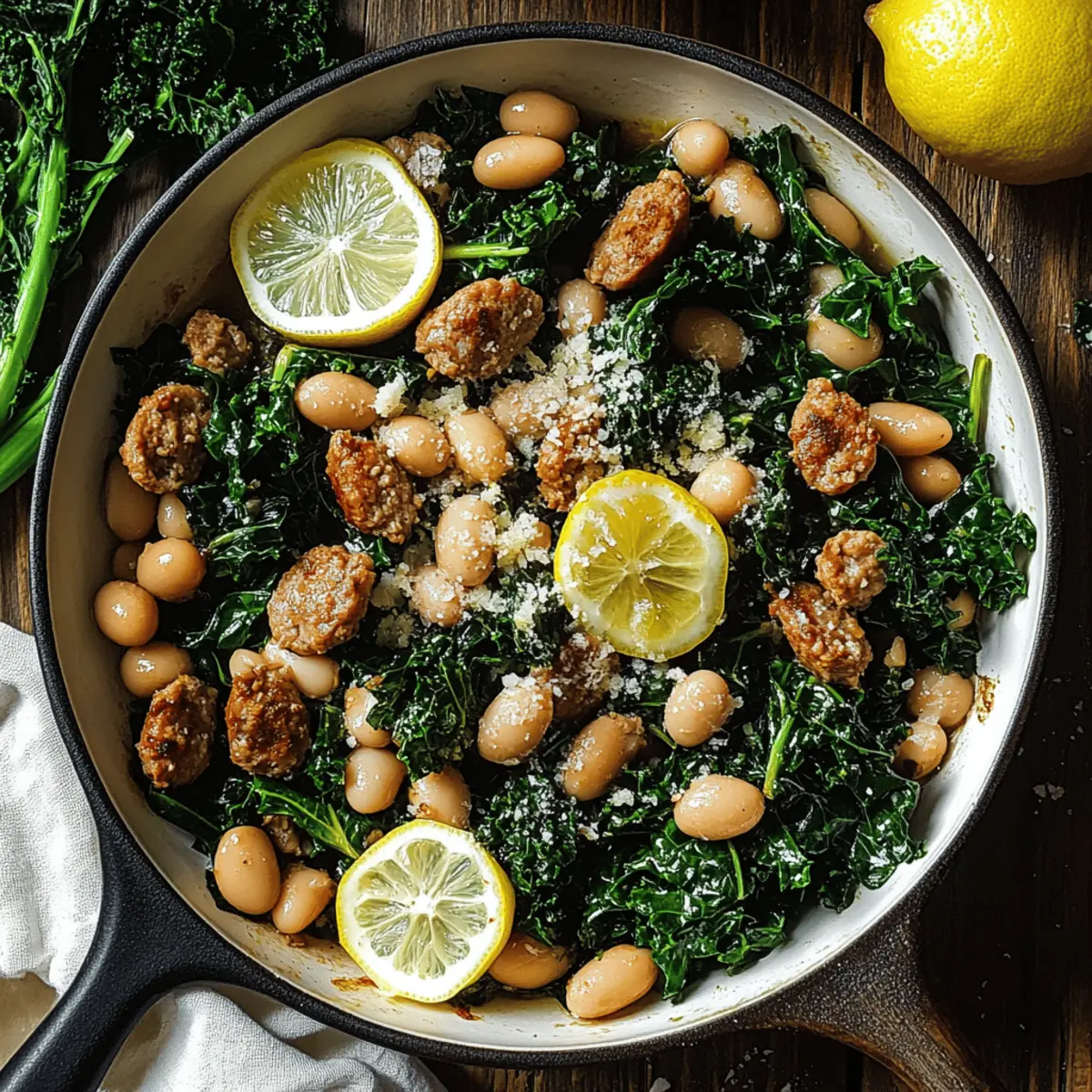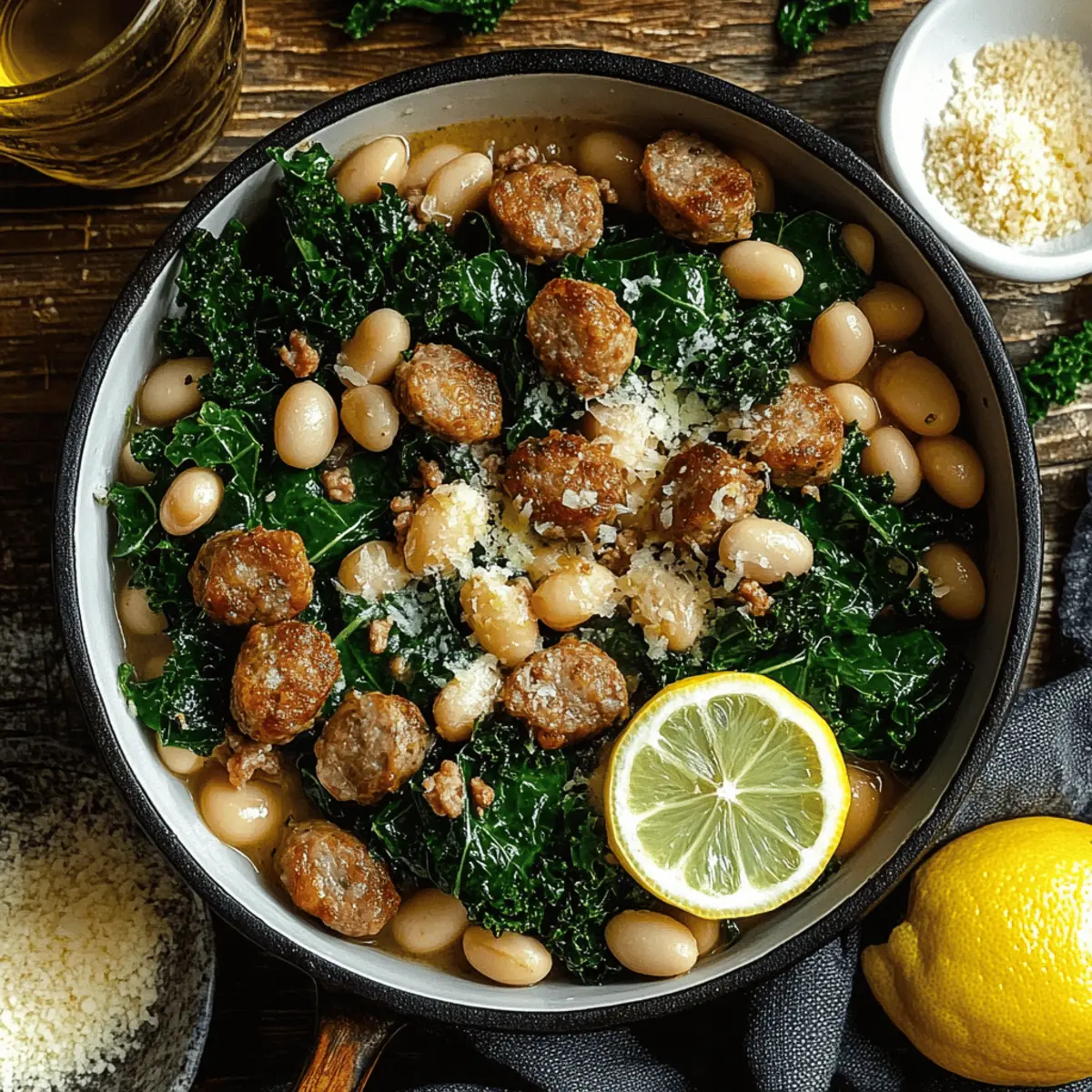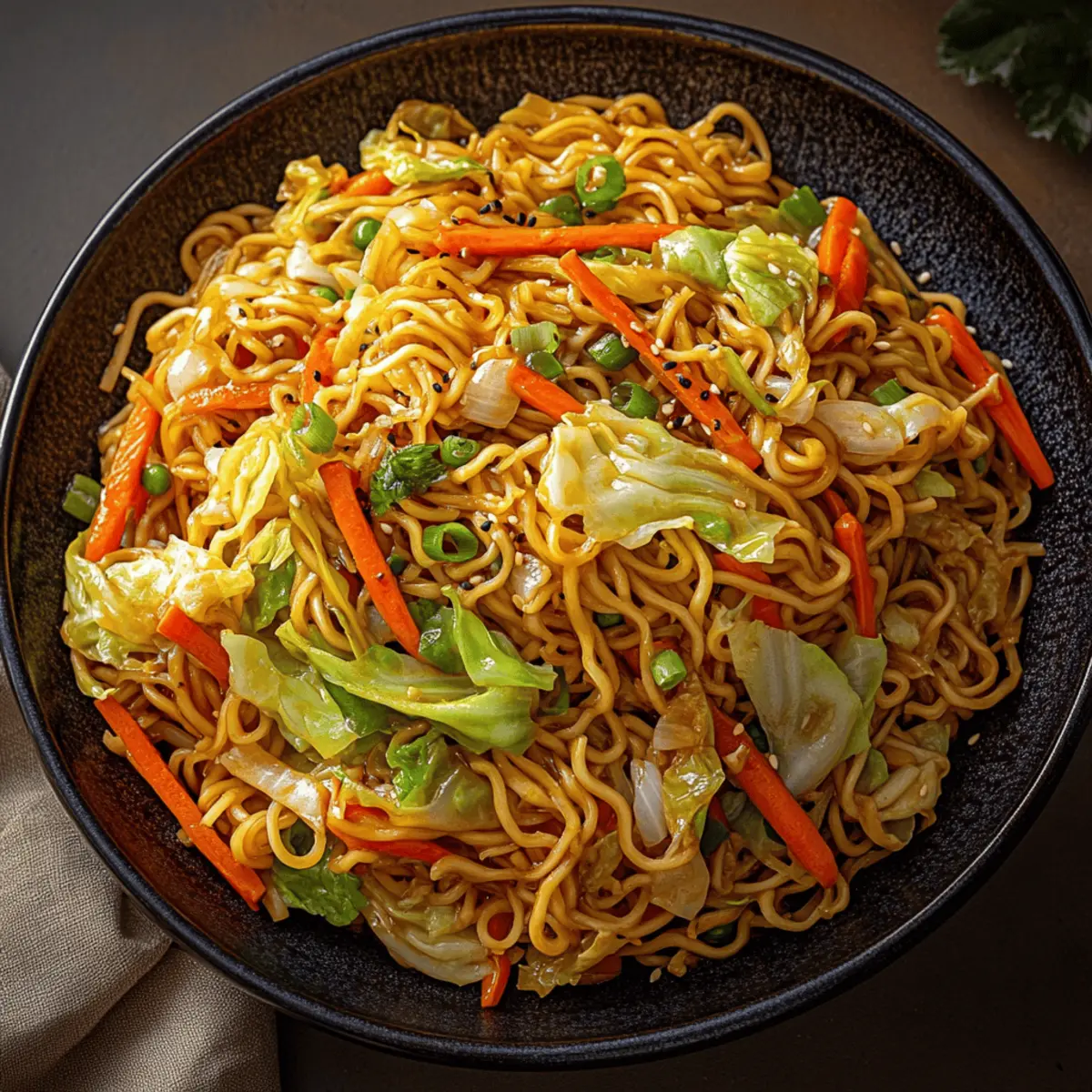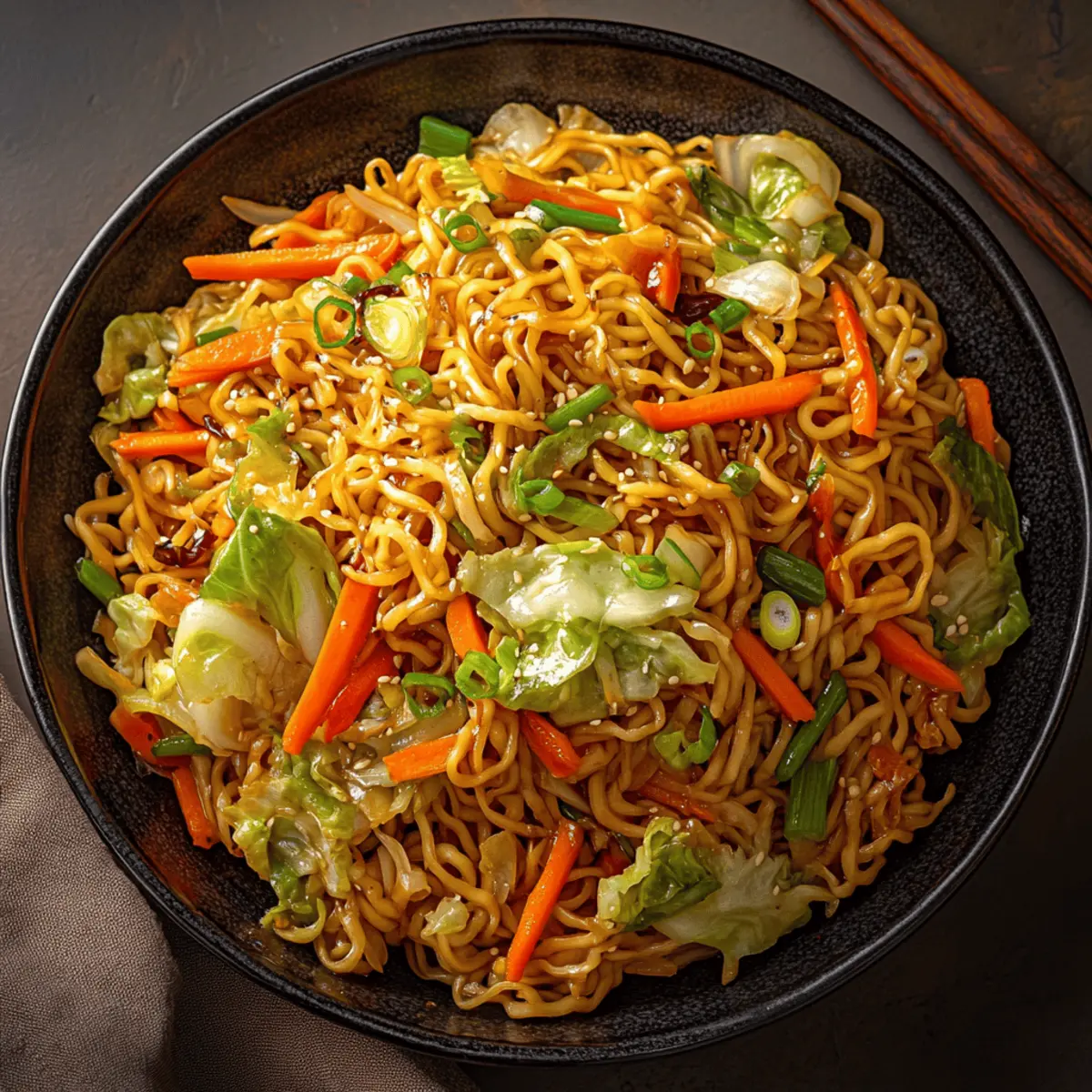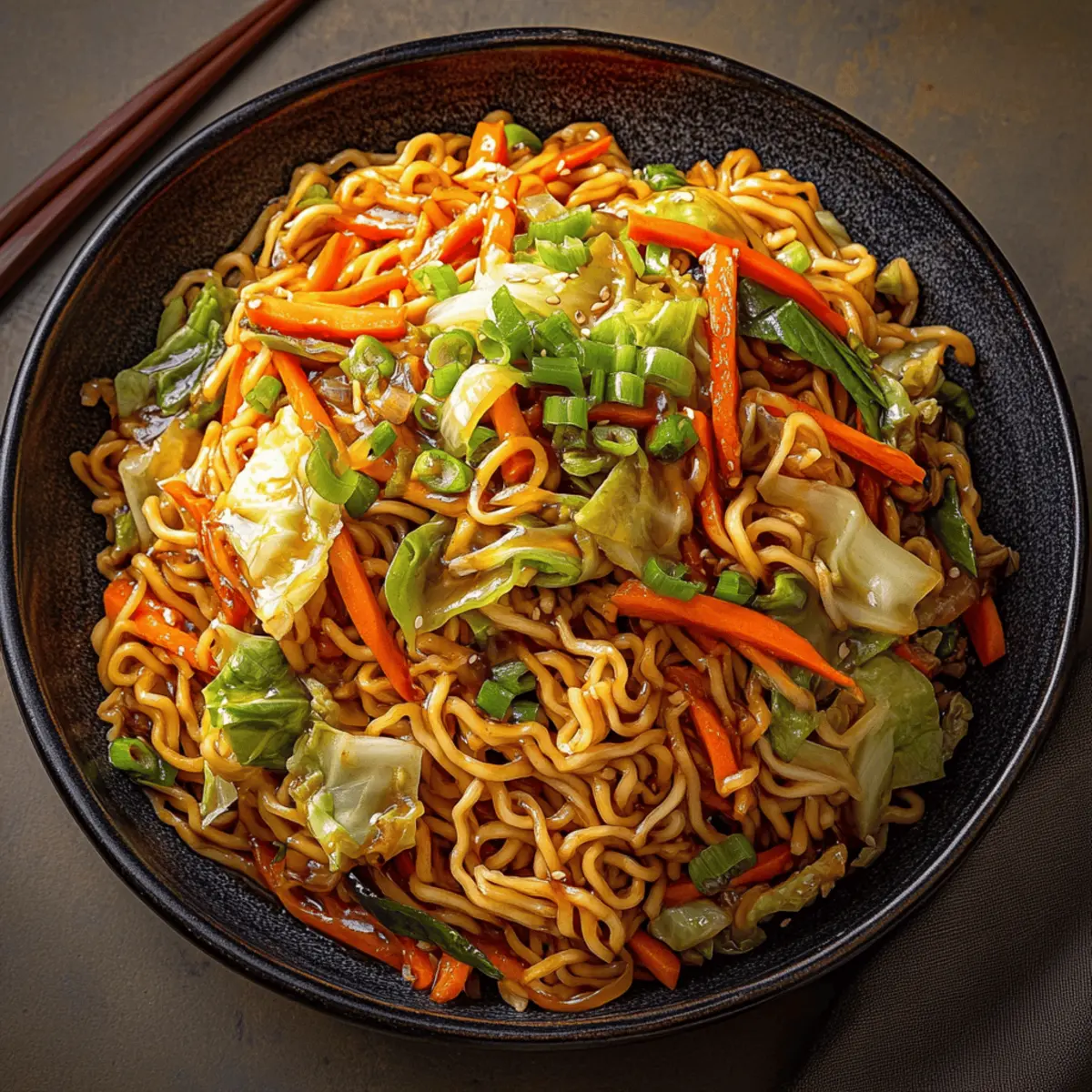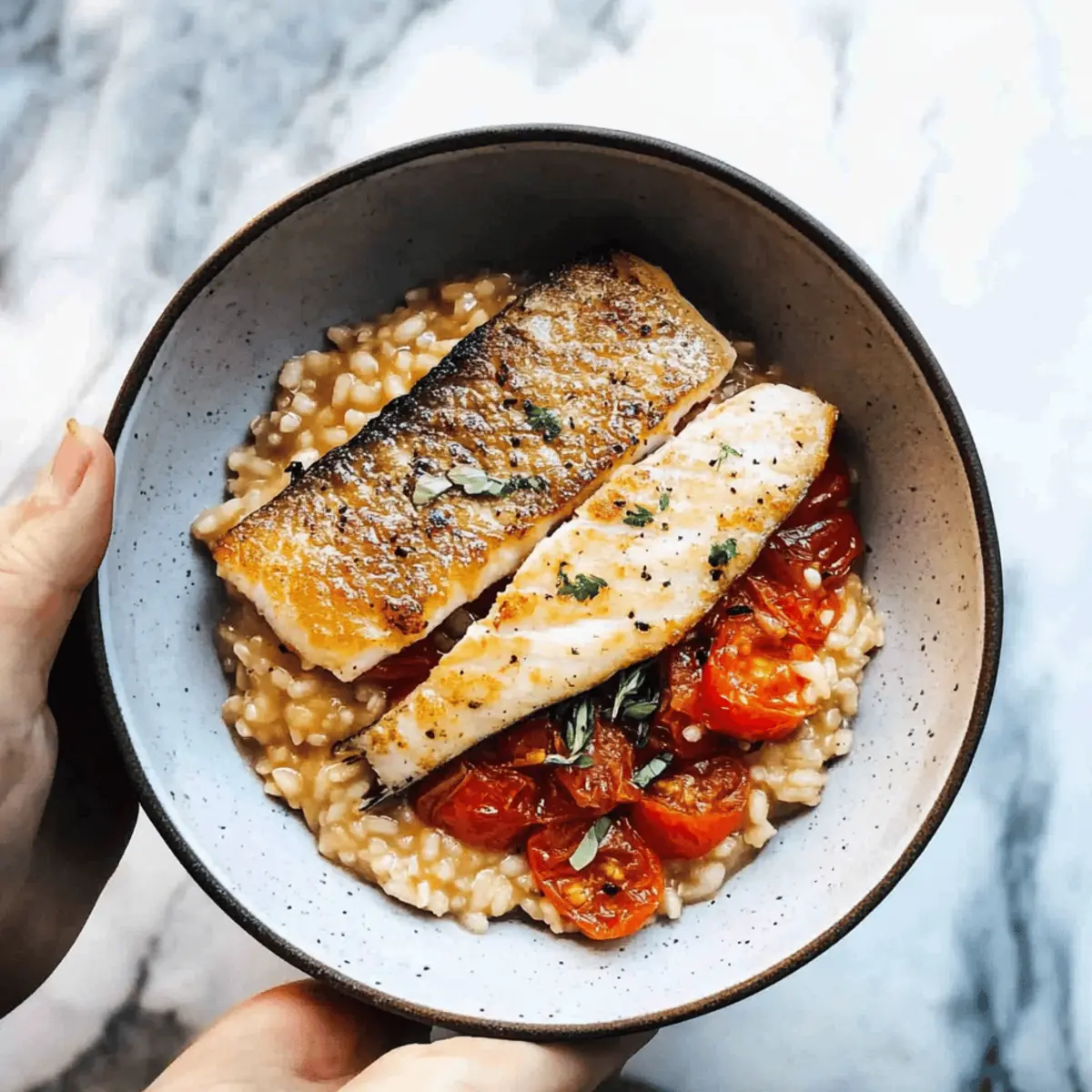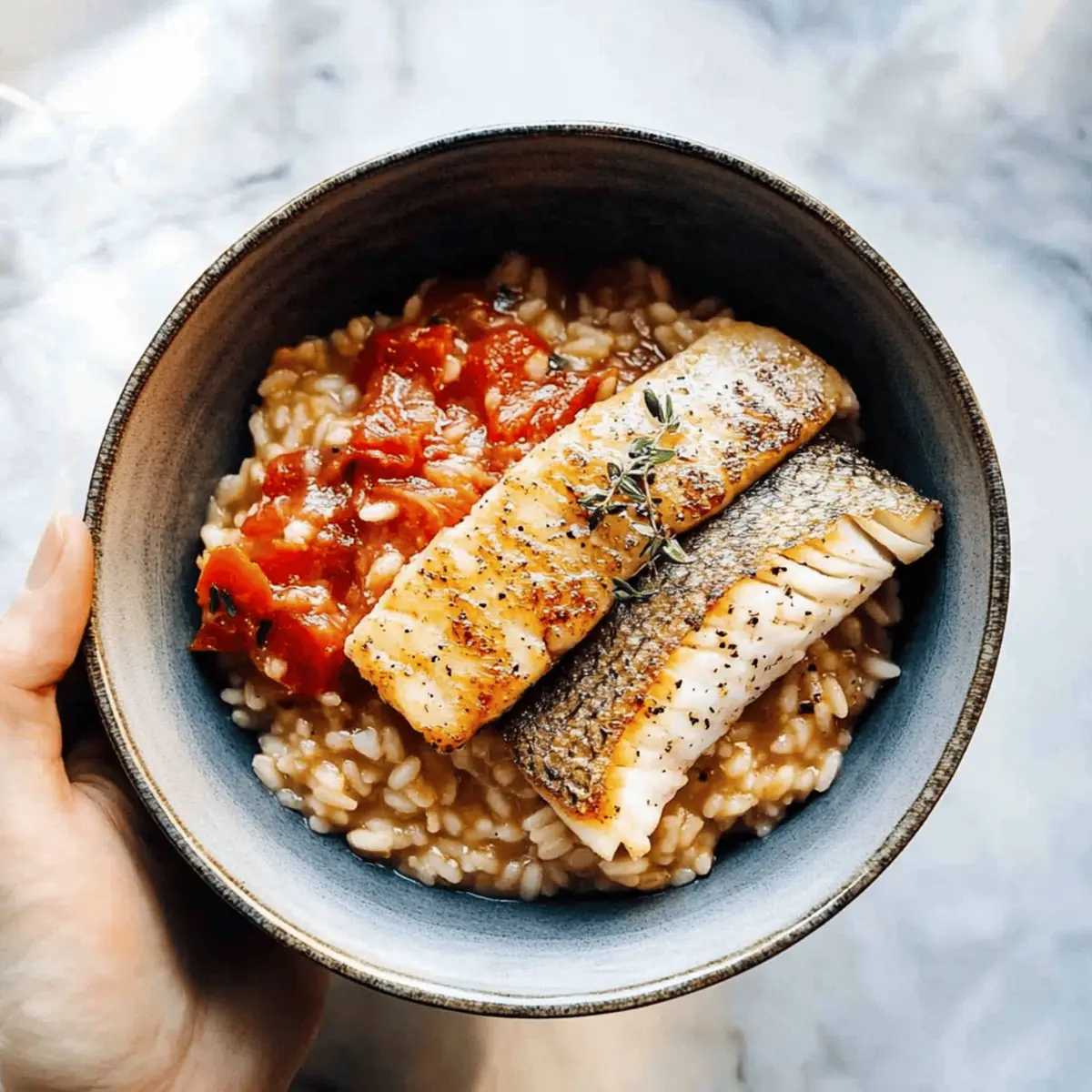A whiff of bubbling cheese and roasted vegetables hits me as I pull my vegetarian lasagna from the oven, instantly warming my heart and home. This recipe for Savory Vegetarian Lasagna Loaded with Roasted Veggies and Creamy Ricotta is the ultimate comfort food alternative that keeps me excited about cooking, even in the busiest weeks. With its rich layers of roasted veggies and smooth ricotta, this dish delivers a satisfying meal that everyone will rave about, proving that homemade can effortlessly outshine takeout. Plus, there’s a vegan version to accommodate all palates and a gluten-free option for those avoiding traditional noodles. It’s hard to resist diving into this cozy, vibrant recipe that promises delicious leftovers too! What do you say—are you ready to transform your dinner plans?
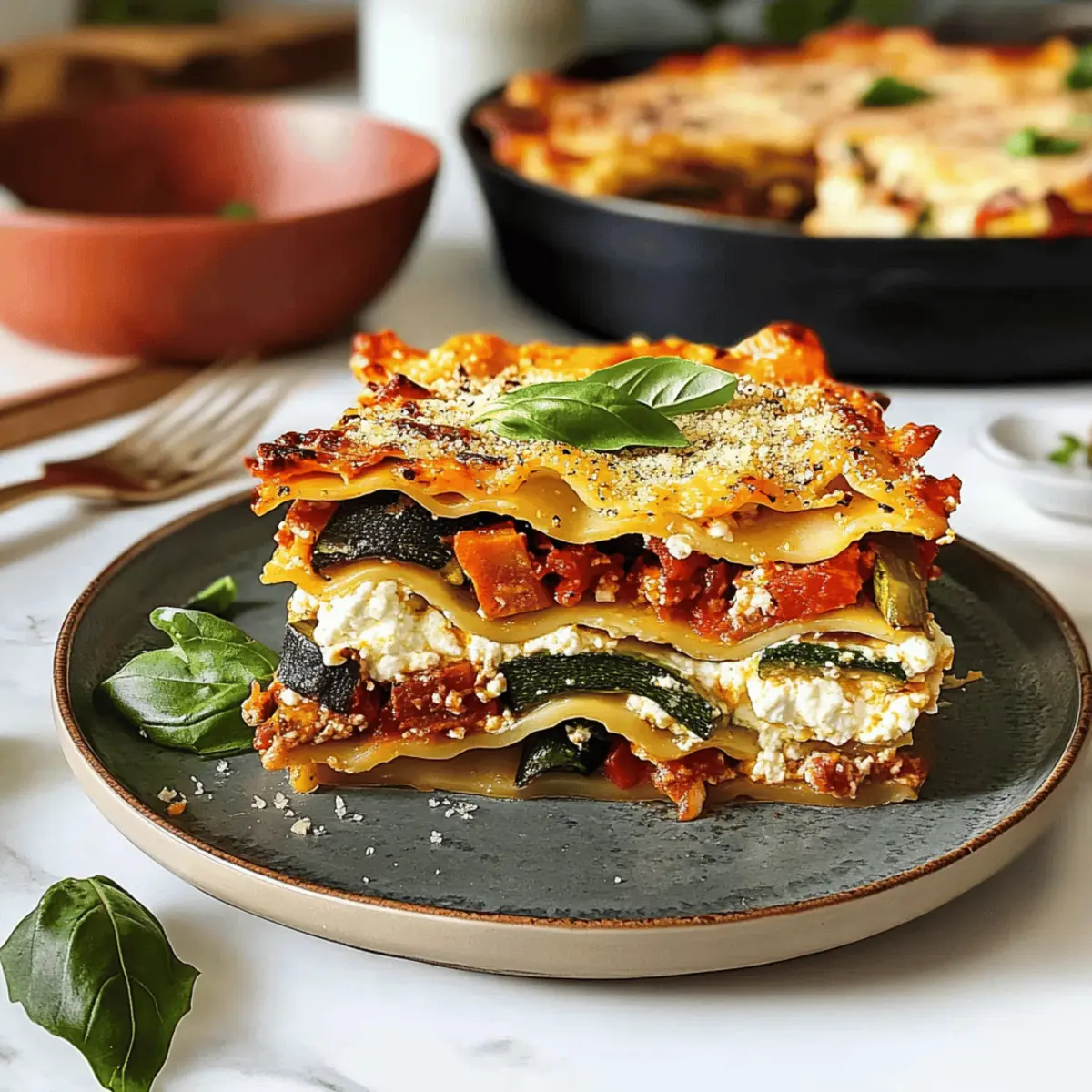
Why is this lasagna a must-try?
Comforting, this vegetarian lasagna wraps you in warm layers of flavor that rival any takeout dish. Quick and easy, it only requires basic cooking skills and simple ingredients, perfect for weeknight meals. Customizable, whether you're vegan or gluten-sensitive, you can easily adapt this recipe to suit your dietary needs. Crowd-pleasing, it's guaranteed to impress family and friends at gatherings; everyone will be coming back for seconds! Plus, you'll savor the fantastic leftovers, making it a meal that keeps on giving. Dive into this delicious, guilt-free comfort food recipe and enjoy a taste of home!
Vegetarian Lasagna Ingredients
• This savory vegetarian lasagna will elevate your dinner game!
For the Roasted Vegetables
- Extra-virgin olive oil – Provides moisture and richness when roasting; substitute with any neutral oil if needed.
- 8 ounces cremini mushrooms – Adds earthy flavor; can use button mushrooms as a substitute.
- 1 red bell pepper – Provides sweetness and vibrant color; any color bell pepper works.
- 1 medium zucchini – Gives moisture and mild flavor; yellow squash makes a great alternative.
- ½ medium yellow onion – Enhances base flavor with sweetness; can replace with shallots or green onions.
- Sea salt and freshly ground black pepper – Essential for seasoning; adjust per taste.
For the Lasagna
- 15 lasagna noodles – Forms the structure of the dish; regular noodles are recommended, or opt for gluten-free noodles as necessary.
- 3 cups marinara sauce – Adds moisture and robust flavor; homemade or store-bought is fine; can substitute with other sauces for variety.
- 3 cups fresh spinach – Contributes nutrients and color; kale or Swiss chard can work as substitutes.
For the Cheese Filling
- 2 cups grated low-moisture, part-skim mozzarella cheese – Provides creaminess and melty texture; substitute with fresh mozzarella or dairy-free cheese for a vegan option.
- ½ cup grated pecorino cheese – Adds sharpness and depth of flavor; Parmesan cheese can be used instead.
- Fresh basil leaves or chopped fresh parsley – For garnish, enhancing both appearance and flavor.
Gather these ingredients for a delicious vegetarian lasagna that will impress everyone around the table!
Step‑by‑Step Instructions for Vegetarian Lasagna
Step 1: Preheat the Oven
Begin by preheating your oven to 425°F (220°C). As it warms up, take out a 9x13 inch baking dish and coat it lightly with extra-virgin olive oil, ensuring the bottom is well-greased. This will help prevent the lasagna from sticking and make cleanup easier later on.
Step 2: Roast the Vegetables
In a mixing bowl, combine the cremini mushrooms, red bell pepper, zucchini, and yellow onion with a generous drizzle of olive oil, sea salt, and freshly ground black pepper. Toss until the vegetables are thoroughly coated. Spread them out evenly on a baking sheet and roast in the preheated oven for 20-25 minutes, or until they're tender and slightly caramelized, adding depth to your delicious vegetarian lasagna.
Step 3: Cook the Noodles
While the vegetables are roasting, bring a large pot of salted water to a boil. Carefully add the lasagna noodles and cook until al dente, usually about 8-10 minutes depending on the brand. Once cooked, drain the noodles in a colander and drizzle a little olive oil over them to prevent sticking. Set aside while you prepare the ricotta filling.
Step 4: Prepare the Ricotta Filling
In a medium mixing bowl, combine the ricotta cheese with grated garlic, lemon zest, a pinch of salt, and freshly ground black pepper. Stir until the mixture is smooth and well blended. This creamy filling will add a luscious layer to your vegetarian lasagna, balancing the roasted vegetables beautifully.
Step 5: Assemble the Lasagna
Spread a thin layer of marinara sauce across the bottom of the greased baking dish. Start layering with lasagna noodles, followed by a portion of the ricotta mixture, a handful of fresh spinach, roasted vegetables, and more marinara sauce. Repeat the layering process until all ingredients are used, finishing with a final layer of noodles topped with remaining marinara and a generous sprinkle of mozzarella and pecorino cheeses.
Step 6: Bake the Lasagna
Cover the assembled vegetarian lasagna with aluminum foil and place it in the oven, reducing the temperature to 400°F (200°C). Bake for 30 minutes, then remove the foil to allow the cheese to brown and bubble for an additional 10-15 minutes. Once golden and fragrant, your lasagna is ready to be taken out and cooled briefly.
Step 7: Let It Rest
Before serving, let your mouthwatering vegetarian lasagna rest for at least 20 minutes. This allows the layers to set, making it easier to slice and serve. The enticing aroma will fill your kitchen, and patience will reward you with perfect slices to delight your family and friends.
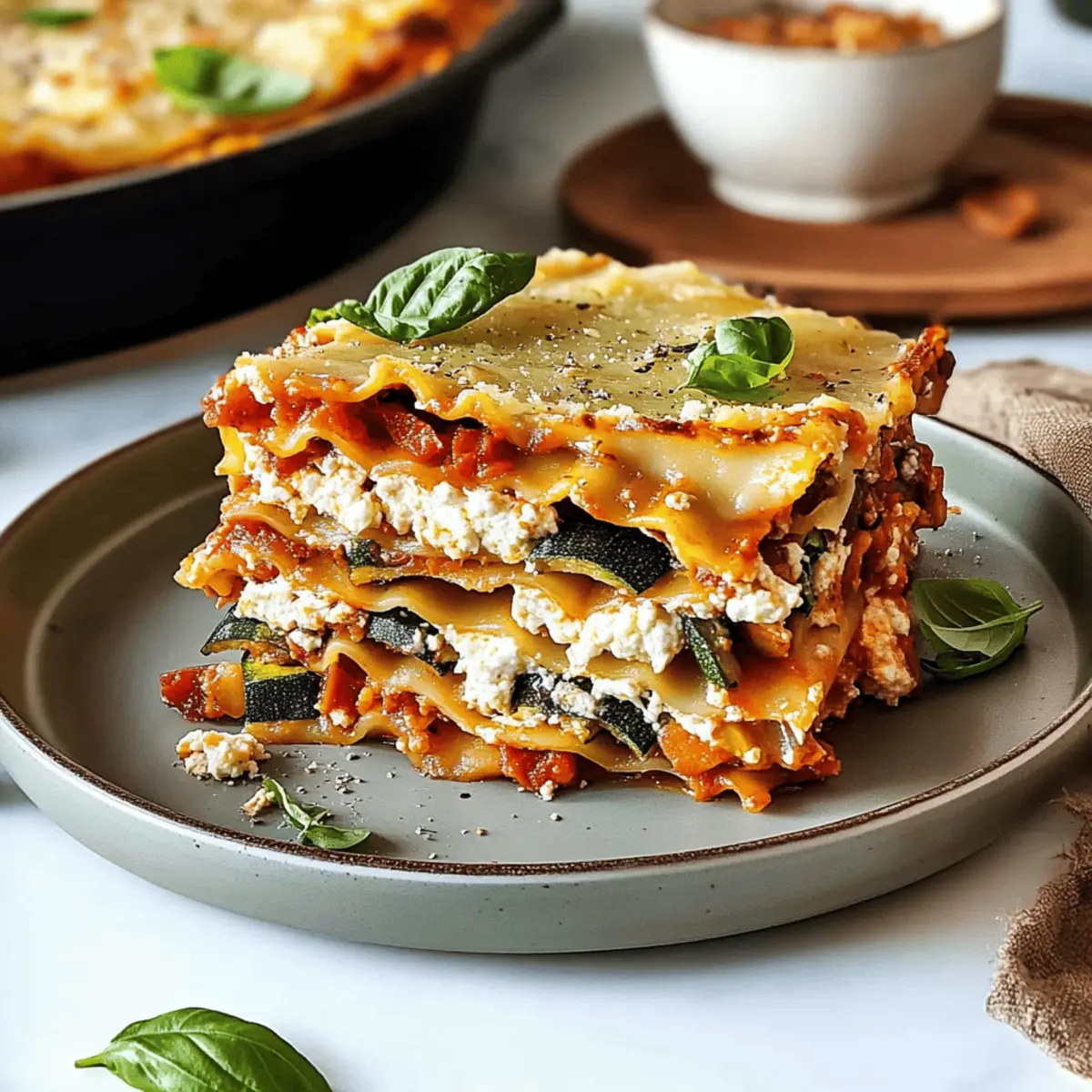
Make Ahead Options
This savory vegetarian lasagna is an excellent candidate for meal prep, saving you time on busy weeknights! You can roast the vegetables and prepare the ricotta filling up to 24 hours in advance, storing them separately in the refrigerator to maintain freshness. Additionally, you can assemble the entire lasagna beforehand and keep it in the fridge for up to 3 days. To do this, layer your ingredients as per the recipe, cover with foil, and store until you’re ready to bake. Just remember to add a few extra minutes to the baking time if you're cooking it straight from the fridge. Your vegetarian lasagna will come out just as delicious, with perfectly layered flavors ready for your family to savor!
How to Store and Freeze Vegetarian Lasagna
-
Fridge: Store leftover vegetarian lasagna in an airtight container for up to 4 days. This will keep the flavors fresh and preserve the creamy texture.
-
Freezer: To freeze, assemble the lasagna in a baking dish, tightly cover it with foil, and store for up to 3 months. This makes for an easy meal prep solution!
-
Reheating: When ready to enjoy, thaw in the refrigerator overnight, then bake covered at 350°F for about 20 minutes or until heated through and bubbly.
-
Portioning: Consider portioning the lasagna into individual servings before freezing; that way, you can enjoy a quick, comforting meal anytime!
Expert Tips for Vegetarian Lasagna
-
Roast Evenly: Ensure all vegetables are cut to similar sizes for even roasting, enhancing flavors that are crucial in your vegetarian lasagna.
-
Noodle Choices: If using no-boil noodles, prepare ¾ of a box and cover with foil initially to retain moisture during baking.
-
Layering Technique: Start with a layer of marinara sauce at the bottom to prevent sticking and maintain moisture; this makes for a delicious, gooey finish.
-
Resting Time: Allow the lasagna to rest for 20 minutes before slicing. This helps it maintain its shape and makes serving easier.
-
Customizable Filling: Feel free to swap the ricotta with your favorite cheese, or try a vegan cheese option to accommodate different dietary needs and elevate flavor.
What to Serve with Savory Vegetarian Lasagna
Indulge your senses with delightful pairings that elevate your vegetarian lasagna night into an unforgettable dining experience.
-
Garlic Bread: The warm, buttery crunch of garlic bread complements the lasagna's rich layers, perfect for soaking up every bit of sauce.
-
Mixed Green Salad: A fresh salad with vibrant greens and a light vinaigrette adds a refreshing crunch that beautifully contrasts the hearty lasagna.
-
Crispy Garlic Roasted Potatoes: The crispy exterior and soft interior create a satisfying bite, bringing a rustic charm to your meal that pairs wonderfully with the lasagna.
-
Grilled Asparagus: Light and slightly charred, grilled asparagus provides a smoky flavor and vibrant color, making a delightful side that enhances your veggie feast.
-
Antipasto Platter: A colorful array of olives, cheeses, and roasted peppers adds complexity and texture, inviting everyone to nibble while the lasagna bakes.
-
Red Wine: A glass of bold red wine, like Chianti or Merlot, enhances the flavors of the lasagna, creating a cozy atmosphere that speaks to Italian tradition.
-
Zucchini Noodles: For extra veggies, serve spiralized zucchini on the side as a light, gluten-free option that perfectly mirrors the lasagna's flavors.
Add these elements to your table, and watch as the savory vegetarian lasagna becomes the star of a vibrant and fulfilling meal!
Vegetarian Lasagna Variations & Substitutions
Feel free to get creative with this vegetarian lasagna recipe—your taste buds will thank you for it!
-
Vegan Option: Replace ricotta with vegan ricotta and skip the cheese on top for a plant-based delight.
You'll still enjoy a creamy texture while keeping it animal-product-free. -
Gluten-Free: Use gluten-free lasagna noodles to cater to dietary needs without losing flavor.
Just make sure to follow the package instructions for the best results. -
Extra Veggies: Add layers of thinly sliced eggplant or roasted butternut squash for a flavor boost and more nutrients.
Not only do these options enhance taste, but they'll also add delightful texture! -
Herb-Infused: Mix fresh herbs like oregano, thyme, or rosemary into your marinara sauce for an aromatic twist.
The extra fragrant elements elevate each bite to a whole new level of deliciousness. -
Spicy Kick: Add crushed red pepper flakes to the marinara sauce to give your lasagna a spicy edge.
Just a sprinkle can turn this comforting dish into a fiery treat that will warm your soul. -
Cheesy Variations: Swap in a mix of mozzarella and provolone for a richer cheesy flavor that tantalizes your palate.
The melting qualities of provolone take this classic to the next level of indulgence. -
Nutty Flavor: For an added crunch, sprinkle some toasted pine nuts or walnuts between layers to introduce unexpected texture.
They not only taste amazing but also add a depth of flavor that's simply irresistible. -
Sauce Swap: Trade marinara for a creamy Alfredo sauce for a different, yet equally comforting, lasagna experience.
This decadent twist transforms your lasagna into a truly luxurious meal!
So whether you choose to experiment with texture, flavor, or dietary needs, these simple substitutions will make your vegetarian lasagna uniquely yours. If you're eager to explore more delicious ideas, check out my recipe for creamy vegan ricotta cheese or enhance your marinara with some fresh herbs for a delightful kick!

Vegetarian Lasagna Recipe FAQs
What vegetables are best for roasting in this lasagna?
Absolutely! The best choices for roasting include cremini mushrooms, red bell peppers, zucchini, and yellow onions as used in this recipe. They add a fantastic depth of flavor and a pleasant texture. Feel free to experiment with seasonal vegetables like eggplant or asparagus for variation; just be sure they're chopped to a similar size for even roasting.
How should I store leftover vegetarian lasagna?
Once you've indulged in this mouthwatering vegetarian lasagna, store any leftovers in an airtight container in the refrigerator for up to 4 days. This helps maintain its delicious flavors and creamy texture—perfect for lunch the next day!
Can I freeze vegetarian lasagna?
Very! To freeze, prepare the lasagna in a suitable baking dish, cover tightly with aluminum foil, and place it in the freezer for up to 3 months. When you're ready to enjoy, simply defrost it overnight in the refrigerator. Before baking, cover it with foil and heat in a preheated oven at 350°F for 20-30 minutes until it’s bubbling and heated through.
What if my lasagna turns out runny?
No need to worry! If your lasagna ends up runny, it's often due to excess moisture from the roasted vegetables or the sauce. To troubleshoot, ensure you drain any excess liquid from the veggies after roasting and use a thicker marinara sauce. Another tip is to let the lasagna rest for 20 minutes after baking to give the layers a chance to set, leading to perfect slices.
Can I make this vegetarian lasagna gluten-free?
Absolutely! You can substitute the regular lasagna noodles with gluten-free lasagna noodles, which are readily available in most grocery stores. When using gluten-free noodles, you may need to adjust the cooking time according to the package instructions, but the rest of the recipe stays the same.
Is this vegetarian lasagna safe for pets or allergens?
It's generally safe for humans but not suitable for pets, especially those sensitive to dairy or certain vegetables. Always check for potential allergens in your ingredients, particularly the cheese, to ensure that they align with your dietary needs or those of your guests. For a vegan option, replace the cheese with plant-based alternatives to accommodate various dietary restrictions!

Mouthwatering Vegetarian Lasagna Bursting with Flavor
Ingredients
Equipment
Method
- Preheat your oven to 425°F (220°C). Lightly coat a 9x13 inch baking dish with olive oil.
- In a mixing bowl, combine mushrooms, red bell pepper, zucchini, and yellow onion with olive oil, sea salt, and pepper. Toss to coat, then spread on a baking sheet and roast for 20-25 minutes.
- Bring a large pot of salted water to a boil. Cook lasagna noodles until al dente, approximately 8-10 minutes. Drain and drizzle with olive oil.
- In a bowl, mix ricotta cheese with grated garlic, lemon zest, salt, and pepper until smooth.
- Layer marinara sauce, noodles, ricotta mixture, spinach, roasted vegetables, and more marinara in the baking dish, repeating until all ingredients are used.
- Cover with foil and bake for 30 minutes at 400°F (200°C). Remove the foil and bake for an additional 10-15 minutes until golden.
- Let the lasagna rest for at least 20 minutes before slicing to allow layers to set.

